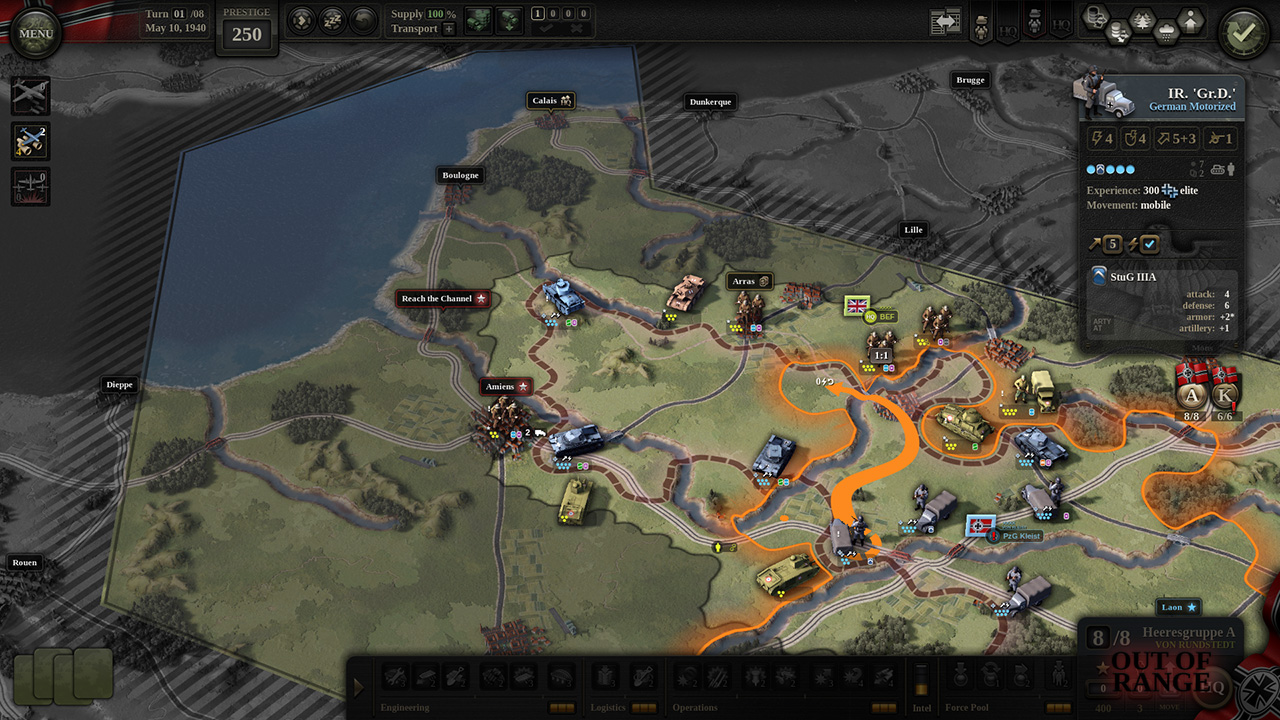
But most importantly, if you achieve final odds of at least 0 with your set-piece attack, the defender automatically loses 1 level of his fortifications. All KIAs on both sides are turned into suppression only. Generally speaking, a “set-piece attack” is a standard attack with a special +2 shift in favor of the attacker. It works across minor but not major rivers. Note that a unit can no longer move after this action (no rotation possible). Only infantry units with an active artillery step can carry out this action, and the unit must start its turn adjacent to the city. “Set piece attack”: This is a special HQ action.If you have two active engineer steps, it’s even better as you will reduce the fortifications by 2 levels! Even if you should suffer a casualty yourself, that’s a small price for “activating” your artillery in the oncoming turns. It will reduce the enemy’s fortifications by 1 level. Standard attack: If your unit has at least one active engineer step and your attack will at least suppress/KIA one enemy step, then you might opt for a standard attack.“Suppressive fire” (25% chance to destroy a level of entrenchment) is not a good way to attack cities, as it has such a high chance to turn the city into ruins. If you let the enemy keep his fortifications, you will miss out on your most important offensive weapon, the artillery shift (typically +3 can be maxed out for +5, though!). If the enemy defending the city is entrenched or fortified, you first need to destroy his fortifications. Step 1: Reduce the enemy’s fortifications = activate your artillery! If you have a choice, I’d prefer 2 engineer steps over 2 arty steps. A second engineer’s special step is particularly useful if the enemy has two entrenchment levels (“fortified”). A second artillery special step will give you more punch but a higher risk of turning the city into ruins. In both cases, additional specialist steps provide you with extra benefits. It’s also beneficial if the unit has 2 engineers + 1 artillery, or 2 artillery + 1 engineer. infantry in the open) don’t work against targets in cities.įirst, I think it’s important to point out that your ideal unit to attack a city is a strong infantry unit with engineer and artillery support. If the defender is entrenched/fortified, no artillery shifts apply for the attacker.įor these reasons, the typical standard attack tactics (relying on the artillery shift, relying on suppressive fire, relying on tanks vs.Air/Bomb strikes are less effective against targets in cities (-1 shift -2 if the target is fortified/entrenched) and have 6% chance to turn the city into ruins.

A ruined city is extremely hard to take (see below).


In 1942, a titanic struggle is reaching its climax in the boundless, trackless expanses of southern Russia. And as the story unfolds, join the Soviet campaign to repel the invaders!

In this turn-based game of strategy and cunning, observe how opportunity leads the German army to advance recklessly into the steppes of southern Russia. Unity of Command lets you replay the epic conflict that was the Stalingrad Campaign of World War II.


 0 kommentar(er)
0 kommentar(er)
